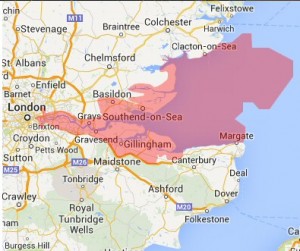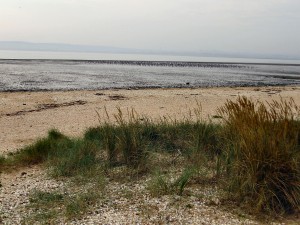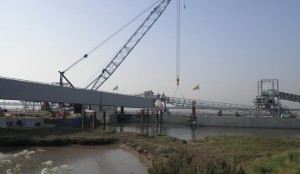On Tuesday (9 December 2014) I joined the RSPB and The Wildlife Trusts on their joint ‘Rally for Nature’, in other words a briefing in Church House, a short march to the Houses of Parliament, and a meeting with my MP, Angie Bray (Conservative) in the Central Lobby.
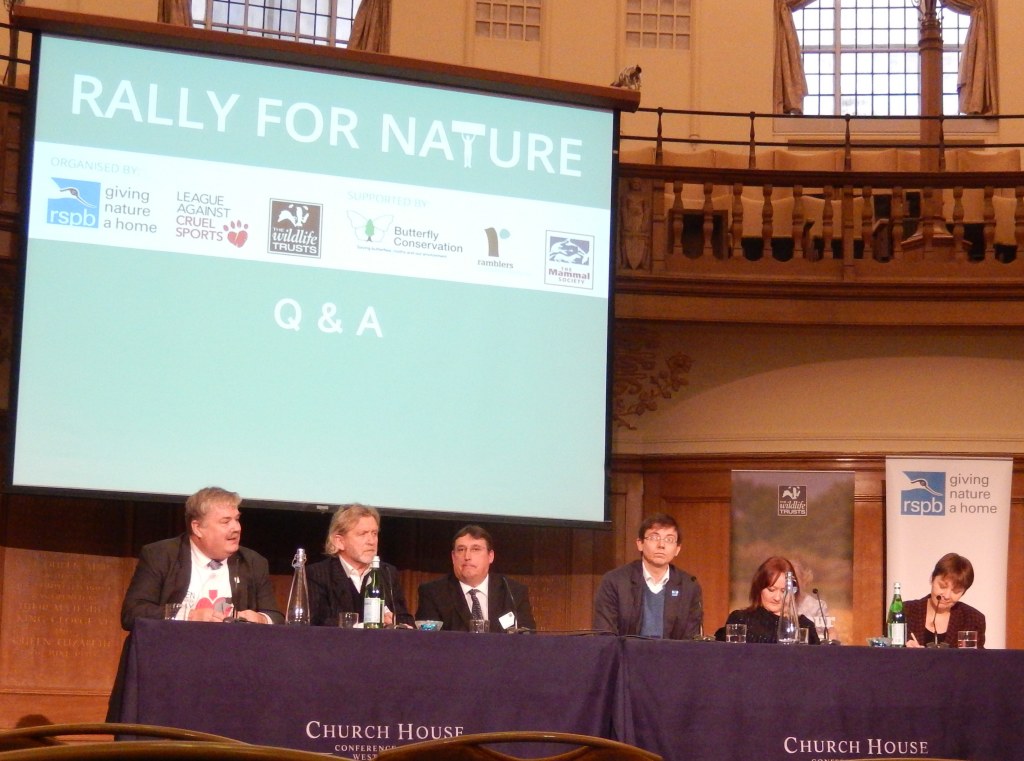
The briefings gave those hoping to see their MP something to say and a bit of guidance about how to say it. Joe Duckworth of LACS hosted the morning panel in a very jolly way.
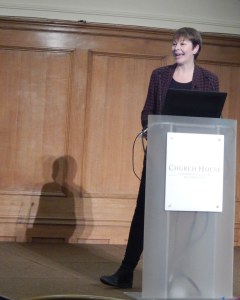
Caroline Lucas spoke clearly and passionately on key campaign causes, fitting a great deal into her 5 minutes: the goals of a Nature and Wellbeing bill, especially to reconnect children with nature; a long-term government commitment to nature; a mechanism for national and local action, including mandatory plans at these levels; and proper coverage in school curricula. She then spoke on the need to control Wildlife Crime, with consistent application of existing laws; need to act on illegal carbofurans used to poison birds of prey; sentencing guidelines; training of prosecutors; and action on trafficking of endangered species. She emphasized the role of the European Union Birds and Habitats Directives, the backbone of our wildlife laws (she noted that the UK did support these, once), and that they are now in danger, even though they are not in any way a block to development. She told us gently that Natural England now has to “consider economic growth” in every decision: an outrageous imposition on an important conservation body, itself in peril of being merged into nothingness. She spoke of the value of nature in people’s mental wellbeing, and that we needed to challenge the idea of growth as the be-all and end-all of government policy. She decried vague talk of “the environment” and told us to focus on the local and real, such as allotments.
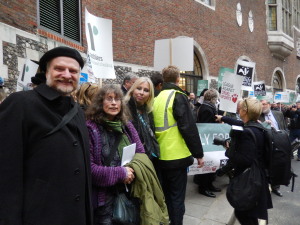
Kerry McCarthy told us she was one of 3 vegan MPs; said people thought it “a bit mad” talking about “bees, bats, badgers”; but that when the public in marginal seats send in over a thousand emails about such a topic, it makes a difference. She reminded us that deprived people were much (10x) less likely to live in green areas, and instead suffered from smoking, drinking, fat, diabetes, unemployment, loneliness and depression. These can all be ameliorated by contact with nature. She said that bees and other pollinators were declining, and that in Bristol the urban pollinators project showed children what bees did, and provided free vegetables to all and sundry. She mentioned Fracking in Chew Valley, and opposed the wasteful practice of subsidising grouse shooting. I asked her what Labour’s biodiversity policy was; she said there wasn’t one yet as the Manifesto wasn’t ready, that it wasn’t a “doorstep issue” (one that voters asked her about), and that a long-term view was needed. I think I heard a polite intake of breath from the audience as they realized Labour really hadn’t got its act together on nature at all.
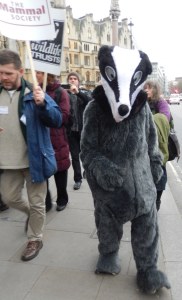
Julian Huppert MP (Lib. Dem.) said airily “We can destroy our viability on this planet.” but said little, to my mind, on what Parliament might do to prevent this. He did say that MPs were impressed by anyone who bothered to come to parliament as it showed commitment. He advised us to make our case, given that “people” (I think he meant MPs) fell into one of 3 categories: those who care about the world (I assume he meant nature); those who care for the local environment (their constituency); and those who just care for how they are perceived, i.e. could be embarrassed into some kind of action if it were seen to be popular. He claimed that the coalition government had doubled renewables and increased green energy. It didn’t seem to be much to do with nature or biodiversity really.
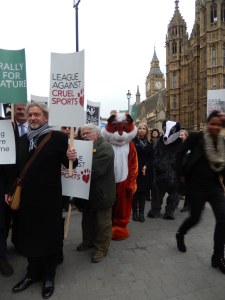
Sir John Randall MP (Con.) told us to be nice to our MP as they assume people will be confrontational, and are far more receptive when we’re not! He had seen peregrines over Parliament and grey wagtails and kingfishers in St James’s Park: wildlife was here, with us, even if there were fewer birds in the countryside, and despite “the scandal that’s going on in Malta” (illegal mass shooting of migrating birds). He came across a lot better than Huppert did.
I was astonished to find no queue at Security, so I had to wait in the Central Lobby for the time I had allowed for queuing! It gave me a chance to go over my carefully-prepared notes, not a bad thing.
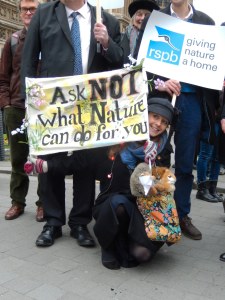
Angie Bray MP told me she was an RSPB member, and that she had written an article for the Ealing Gazette on bees, but (she volunteered) wasn’t convinced by the dire claims on neonicotinoids; it wasn’t something on my list, as it happens. We agreed totally on the need for children to get outside to play, to be in nature, and that parents were needlessly fearful of paedophiles in the park (most child molesters are, unhappily, within the extended family or otherwise known to the children concerned). She mentioned in passing that LACS were basically too wild to be taken seriously. She agreed that poisoning and the use of illegal lead shot were not good, and we parted all smiles.

